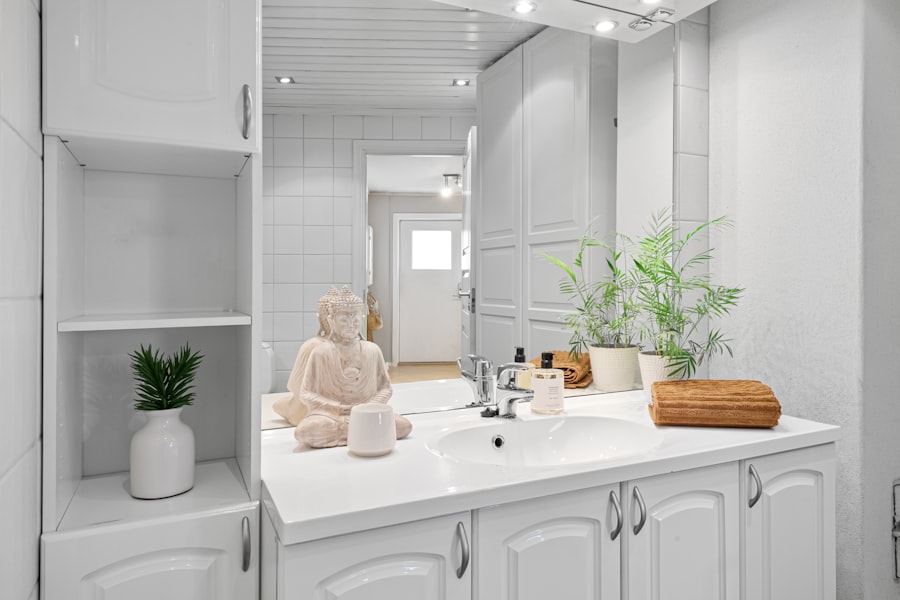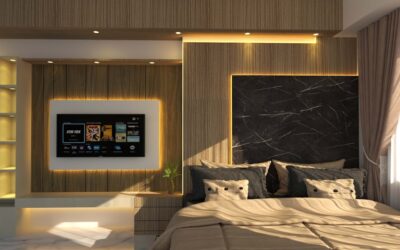In recent years, the construction and design industries have witnessed a significant shift towards sustainability, with eco-friendly materials taking center stage. Homeowners are increasingly aware of the environmental impact of their choices, leading to a surge in the use of sustainable materials such as bamboo, reclaimed wood, and recycled metal. Bamboo, for instance, is a rapidly renewable resource that grows much faster than traditional hardwoods, making it an excellent choice for flooring and cabinetry.
Its natural strength and versatility allow it to be used in various applications, from furniture to decorative accents. Reclaimed wood, sourced from old barns or decommissioned buildings, not only reduces waste but also adds character and history to a home. Each piece tells a story, providing a unique aesthetic that new materials often lack.
Moreover, recycled materials are becoming increasingly popular in home construction and design. For example, countertops made from recycled glass or concrete not only divert waste from landfills but also offer stunning visual appeal. These materials can be crafted into striking designs that serve as focal points in kitchens and bathrooms.
Additionally, eco-friendly insulation options, such as cellulose made from recycled paper or sheep’s wool, provide excellent thermal performance while minimizing environmental impact. The integration of these sustainable materials not only contributes to a healthier planet but also enhances the overall quality of life for homeowners by creating spaces that are both beautiful and responsible.
Key Takeaways
- Emphasis on sustainable materials and energy-efficient appliances promotes eco-friendly living.
- Integration of smart home technology enhances convenience and connectivity.
- Open concept and multi-functional spaces offer flexibility for modern lifestyles.
- Dedicated home offices and outdoor entertainment areas cater to work-life balance and leisure.
- Bold colors and statement lighting add personality and vibrancy to interior design.
Smart Home Technology Integration
The advent of smart home technology has revolutionized the way we interact with our living spaces. Home automation systems allow homeowners to control various aspects of their homes—from lighting and heating to security and entertainment—through their smartphones or voice-activated devices. This level of integration not only enhances convenience but also promotes energy efficiency.
For instance, smart thermostats can learn a homeowner’s schedule and adjust heating and cooling accordingly, leading to significant energy savings over time. Similarly, smart lighting systems can be programmed to turn off when rooms are unoccupied or adjust based on natural light levels, further reducing energy consumption. Beyond energy management, smart home technology also enhances security and peace of mind.
Homeowners can monitor their properties remotely through security cameras and receive alerts about unusual activity. Smart locks allow for keyless entry and can be programmed to grant access to guests or service providers at specific times. This level of control and monitoring is particularly appealing in today’s fast-paced world, where safety and convenience are paramount.
As technology continues to evolve, the integration of smart home features will likely become even more seamless, creating homes that are not only intelligent but also responsive to the needs of their inhabitants.
Open Concept Living Spaces

The trend towards open concept living spaces has transformed the way homes are designed and experienced. By removing walls that traditionally separated kitchens, dining areas, and living rooms, homeowners can create a more fluid and interconnected environment. This design approach fosters a sense of community within the home, allowing family members and guests to interact more freely.
The absence of barriers encourages socialization and collaboration, making it ideal for entertaining or simply enjoying family time. Open concept spaces also benefit from increased natural light, as larger areas allow sunlight to penetrate deeper into the home. This not only enhances the aesthetic appeal but also contributes to a healthier living environment by reducing the need for artificial lighting during the day.
Additionally, open layouts can make smaller homes feel more spacious and inviting. However, achieving balance in an open concept design requires careful consideration of furniture placement and decor to ensure that each area maintains its distinct purpose while still feeling cohesive with the overall space.
Multi-Functional and Flexible Rooms
As lifestyles evolve, so too do the needs of homeowners regarding their living spaces. Multi-functional rooms have emerged as a solution to maximize utility without sacrificing style. These versatile spaces can serve various purposes depending on the time of day or the needs of the occupants.
For example, a guest room can double as a home office during the day, equipped with a fold-out desk and storage solutions that keep work materials organized yet out of sight when not in use. Flexible rooms can also adapt to changing family dynamics. A playroom for young children can be transformed into a study area for teenagers or a cozy reading nook for adults as the years go by.
Incorporating modular furniture—such as sofas that convert into beds or tables that expand—can further enhance the functionality of these spaces. This adaptability not only maximizes square footage but also allows homeowners to invest in quality pieces that grow with their needs over time.
Home Office and Study Spaces
The rise of remote work has underscored the importance of dedicated home office and study spaces within residential design. A well-designed home office should prioritize functionality while also promoting productivity and comfort. Ergonomic furniture is essential; adjustable desks that allow for both sitting and standing positions can help reduce strain during long working hours.
Additionally, incorporating ample storage solutions ensures that work materials are organized and easily accessible, minimizing distractions. Natural light plays a crucial role in creating an inviting workspace. Positioning desks near windows or utilizing skylights can enhance mood and focus while reducing reliance on artificial lighting.
Furthermore, soundproofing elements—such as acoustic panels or heavy drapes—can help create a quiet environment conducive to concentration. As remote work becomes more entrenched in modern life, investing in thoughtful home office design will continue to be a priority for many homeowners.
Outdoor Living and Entertainment Areas

The desire for outdoor living spaces has surged as people seek to extend their homes into nature. Outdoor areas can serve as extensions of indoor living rooms, complete with comfortable seating, dining areas, and even outdoor kitchens. These spaces provide an ideal setting for entertaining guests or enjoying family gatherings while basking in fresh air and natural surroundings.
Incorporating features such as fire pits or outdoor fireplaces can enhance the ambiance, allowing for year-round enjoyment regardless of the season. Landscaping plays a vital role in creating inviting outdoor environments. Thoughtfully designed gardens with native plants not only enhance aesthetic appeal but also promote biodiversity and require less maintenance than traditional lawns.
Additionally, incorporating elements like pergolas or shade sails can provide relief from the sun while adding architectural interest to outdoor spaces. As homeowners increasingly prioritize outdoor living, these areas are becoming essential components of modern residential design.
Energy-Efficient Appliances and Fixtures
Energy efficiency has become a cornerstone of modern home design, with appliances and fixtures playing a pivotal role in reducing energy consumption. Energy Star-rated appliances are designed to use less electricity and water without sacrificing performance, making them an attractive choice for environmentally conscious homeowners. For instance, energy-efficient refrigerators utilize advanced cooling technologies that minimize energy use while maintaining optimal food preservation conditions.
In addition to appliances, fixtures such as low-flow faucets and showerheads contribute significantly to water conservation efforts. These fixtures reduce water usage without compromising performance, making them an essential consideration in sustainable home design. Furthermore, integrating smart technology into appliances allows homeowners to monitor usage patterns and make informed decisions about energy consumption.
As awareness of environmental issues continues to grow, energy-efficient appliances will remain a key focus for homeowners looking to reduce their ecological footprint.
Spa-Like Bathroom Retreats
Bathrooms have evolved from purely functional spaces into luxurious retreats designed for relaxation and rejuvenation. Spa-like bathrooms often feature high-end materials such as natural stone tiles, freestanding soaking tubs, and rainfall showerheads that create an atmosphere reminiscent of a high-end spa experience. The incorporation of ambient lighting—such as dimmable sconces or LED strips—can further enhance the tranquil ambiance.
In addition to aesthetics, thoughtful design elements contribute to the overall experience of a spa-like bathroom. Features such as heated floors provide comfort during colder months, while built-in sound systems allow for soothing music or nature sounds during baths or showers. Incorporating plants or natural elements can also enhance the connection to nature, promoting relaxation and well-being.
As homeowners seek solace in their personal spaces, creating spa-like bathrooms has become an essential aspect of modern residential design.
Customized Storage Solutions
As homes become more multifunctional and flexible, the need for customized storage solutions has never been greater. Tailored storage options allow homeowners to maximize space while keeping their environments organized and clutter-free. Built-in shelving units can be designed to fit specific dimensions or accommodate unique items such as books or collectibles, ensuring that every inch of space is utilized effectively.
Closets have also seen significant advancements in customization, with modular systems that allow homeowners to create personalized layouts based on their specific needs. From adjustable shelving to pull-out drawers for accessories, these systems provide efficient organization while enhancing accessibility. Additionally, creative storage solutions—such as under-stair cabinets or hidden compartments—can transform otherwise wasted space into functional areas that contribute to overall home efficiency.
Statement Lighting Fixtures
Lighting plays a crucial role in setting the mood and enhancing the aesthetic appeal of any space within a home. Statement lighting fixtures have emerged as focal points that not only illuminate but also serve as artistic expressions within interior design. From oversized chandeliers in grand entryways to sculptural pendant lights above kitchen islands, these fixtures can dramatically alter the atmosphere of a room.
Incorporating various types of lighting—such as ambient, task, and accent lighting—can create depth and dimension within spaces. Layering different light sources allows homeowners to adjust brightness levels based on activities or moods throughout the day. Moreover, selecting fixtures that reflect personal style—whether through bold colors or unique designs—can infuse character into a home while ensuring functionality remains at the forefront.
Bold and Vibrant Color Palettes
Color has the power to transform spaces dramatically; bold and vibrant color palettes are increasingly being embraced in modern home design as a means of self-expression and creativity. Homeowners are moving away from neutral tones in favor of rich hues that evoke emotion and energy within their environments. Deep blues, vibrant greens, and warm terracotta shades can create striking backdrops that enhance architectural features while adding personality.
Accent walls painted in bold colors or adorned with wallpaper featuring intricate patterns can serve as focal points within rooms, drawing attention and sparking conversation among guests. Additionally, incorporating colorful furnishings—such as sofas or artwork—can further amplify the vibrancy of a space without overwhelming it. As trends continue to evolve towards personalization in design choices, embracing bold color palettes allows homeowners to curate environments that reflect their unique tastes and lifestyles.
As homeowners look to enhance their living spaces in 2025, staying informed about the latest trends is essential. One related article that provides valuable insights is Kitchen Remodeling Tips and Trends, which explores innovative ideas and practical advice for transforming one of the most important areas of the home. This resource complements the broader discussion of top home remodeling trends, offering specific guidance for those considering a kitchen upgrade.
FAQs
What are the top home remodeling trends for 2025?
The top home remodeling trends for 2025 include sustainable and eco-friendly materials, smart home technology integration, open-concept living spaces, multifunctional rooms, and the use of natural light through larger windows and skylights.
Why is sustainability important in home remodeling for 2025?
Sustainability is important because it reduces environmental impact, lowers energy costs, and promotes healthier living environments. Homeowners are increasingly choosing eco-friendly materials and energy-efficient appliances to create greener homes.
How is smart home technology influencing remodeling trends?
Smart home technology is influencing remodeling by enabling homeowners to integrate automated lighting, security systems, climate control, and voice-activated devices, enhancing convenience, security, and energy efficiency.
What design features are popular in 2025 remodeling projects?
Popular design features include open floor plans, minimalist aesthetics, natural materials like wood and stone, biophilic design elements, and flexible spaces that can serve multiple purposes.
Are multifunctional rooms a trend in 2025 home remodeling?
Yes, multifunctional rooms are a significant trend as homeowners seek to maximize space efficiency. Rooms that serve as home offices, gyms, or guest rooms are increasingly common.
How important is natural light in current remodeling trends?
Natural light is very important as it improves mood, reduces energy consumption, and enhances the overall ambiance of a home. Larger windows, glass doors, and skylights are popular features to increase natural light.
What role do outdoor living spaces play in 2025 remodeling?
Outdoor living spaces are gaining popularity, with homeowners investing in patios, decks, outdoor kitchens, and gardens to extend their living areas and enjoy nature.
Is energy efficiency a focus in 2025 home remodeling?
Yes, energy efficiency remains a key focus, with many homeowners upgrading insulation, windows, HVAC systems, and appliances to reduce utility bills and environmental impact.
How can homeowners stay updated on remodeling trends?
Homeowners can stay updated by following industry publications, attending home shows, consulting with remodeling professionals, and exploring online resources and social media platforms dedicated to home design.
Are there any budget-friendly remodeling trends for 2025?
Budget-friendly trends include DIY projects, using reclaimed or recycled materials, focusing on small but impactful upgrades like painting or lighting, and prioritizing energy-efficient improvements that save money over time.




